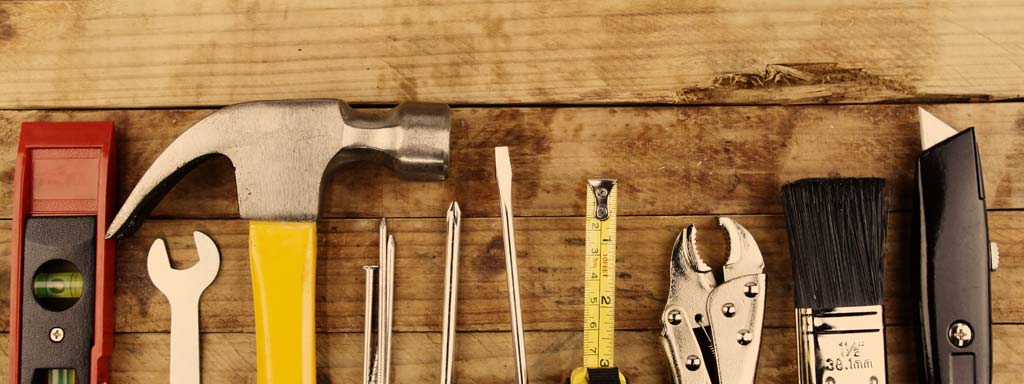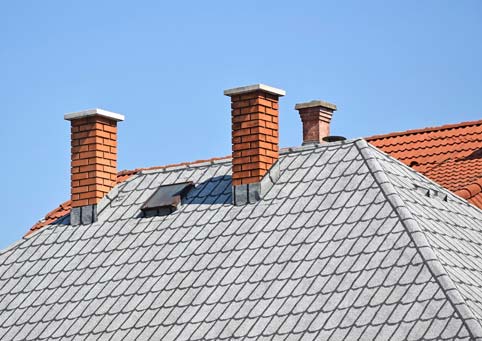

Cold winter weather is back. With the return of the chilly season, you’re likely to once again use your fireplace on a regular basis for heating. Having a fireplace can supply enough heat in your home, even if you live in some of the coldest parts of the country. The good thing about heating with fire is that it’s considered to be a highly affordable alternative to electrical heating.
But even when heating with fire, there are things you should know. The kinds of wood you use can have a huge impact on both the efficiency and safety of using fire to heat your home. Better wood will prevent damage to your chimney and should give off less smoke and sparks as it burns.
Use Only Well-Seasoned Woods
Don’t ever use green woods that have not yet dried properly. Woods that aren’t well-seasoned will cause more creosote buildup in your chimney. Creosote buildup can eventually block your chimney completely.
There are a few good indicators you can use to determine the dryness of your firewood. A well seasoned wood should have all, or most, of the following properties:
- Cracks in the wood are a good indication of dryness, but shouldn’t be the only thing you check for. Green woods can have cracks while well-seasoned, dry woods can have no cracks at all.
- Splitting a piece of wood to feel whether the inside is damp is a reliable method to check if it’s ready to burn. Wood that feels even slightly damp should be left to dry out more before you use it in your fireplace.
- When the wood dries, it’ll darken from white or cream to a brownish gray or yellow depending on the kind of wood you’re using.
- Properly dried wood will sound somewhat hollow when you hit them against one another. They’ll make a hollow thump. Greener woods, however, will sound more dull when you strike two pieces together.
- Burning a piece can be a reliable way to tell if the wood is still too wet. Green wood will hiss as it burns and often makes more crackling noises than dry wood. Furthermore, dry wood will catch fire more easily than wet wood.
If you still feel unsure about how to tell if wood is ready to burn, you could invest in a wood moisture meter. Wood moisture meters are a reliable way to tell whether your wood is dry and they’re easy to use.
Stacking Your Firewood
During spring, summer and fall, you should aim to stack green firewood in a way that will allow it to dry more easily. There are a few things that’ll help the wood season more quickly.
- Don’t stack unseasoned wood too densely. It’s better to stack pieces of different sizes together so that there’s plenty of ventilation room between each piece. Stacking your firewood should be nothing like playing a game of tetris!
- Your stacks should preferably be on the smaller side. A big stack with many rows might look impressive, but if some pieces aren’t exposed to open air, your firewood will dry unevenly. Pieces closer to the center of your stack will stay wet for longer.
- Keep your stack where there’s plenty of sunshine. You want the wood to dry and prevent any mold from growing.
- Avoid stacking your firewood directly on the ground in your garden. Wood that’s dried a bit can be stored in a roofed shed that isn’t closed on every side. You need some air movement to help wood dry. Unseasoned woods stored in an unventilated area can cause mold to grow, which is a potential health hazard.
Piece Size
For the best results, the pieces of wood you burn should be about 14-18 inches long. But your preferred length will vary depending on the width of your fireplace. To make stacking a fire easier, pieces should be more or less equal in length and they shouldn’t be too long to fit properly in your fireplace.
The diameter of the pieces you use will also differ. If you want a fire that stays worm for a long time without needing to tend to it often, most of the pieces you use should be larger. Ideally, your fires should, however, consist of smaller pieces and larger pieces. Smaller pieces catch fire more easily and will burn faster than larger pieces. When measured across the widest part, the width of your pieces should vary between 3-6 inches.
Trees That Make Good Firewood
The tree species you burn for firewood will have significant impact on the way your fire burns. For fireplaces you should try to use woods that are denser. The best choices for firewood will be woods that burn hot enough to warm your house, but not so hot it damages the inside of your chimney. Good woods to burn include birch, oak, hickory, maple, ash and beech. Woods that are still good, but somewhat less good include cherry, fir and walnut.
Avoid burning chestnut, spruce and hemlock as these woods often smoke and spark a lot while burning. Soft woods, like pine, are good when you want to start a fire, but not ideal to use as fire fuel once you’ve got a fire going because they tend to smoke more than other options.
However, if you have some wood you’re unsure about, it won’t do much harm to burn some of it and check for smoke and sparks as it burns. Don’t continue using a wood as your main source of fire fuel if you find that the wood gives off too much smoke or sparks a lot.
Because it’s already winter, you won’t be able to dry woods yourself anymore. Check that any wood you buy is already well-seasoned and that the pieces are a good size. Buying wood from a good supplier is the best way to know your firewood will be of a high quality.







Recent Comments